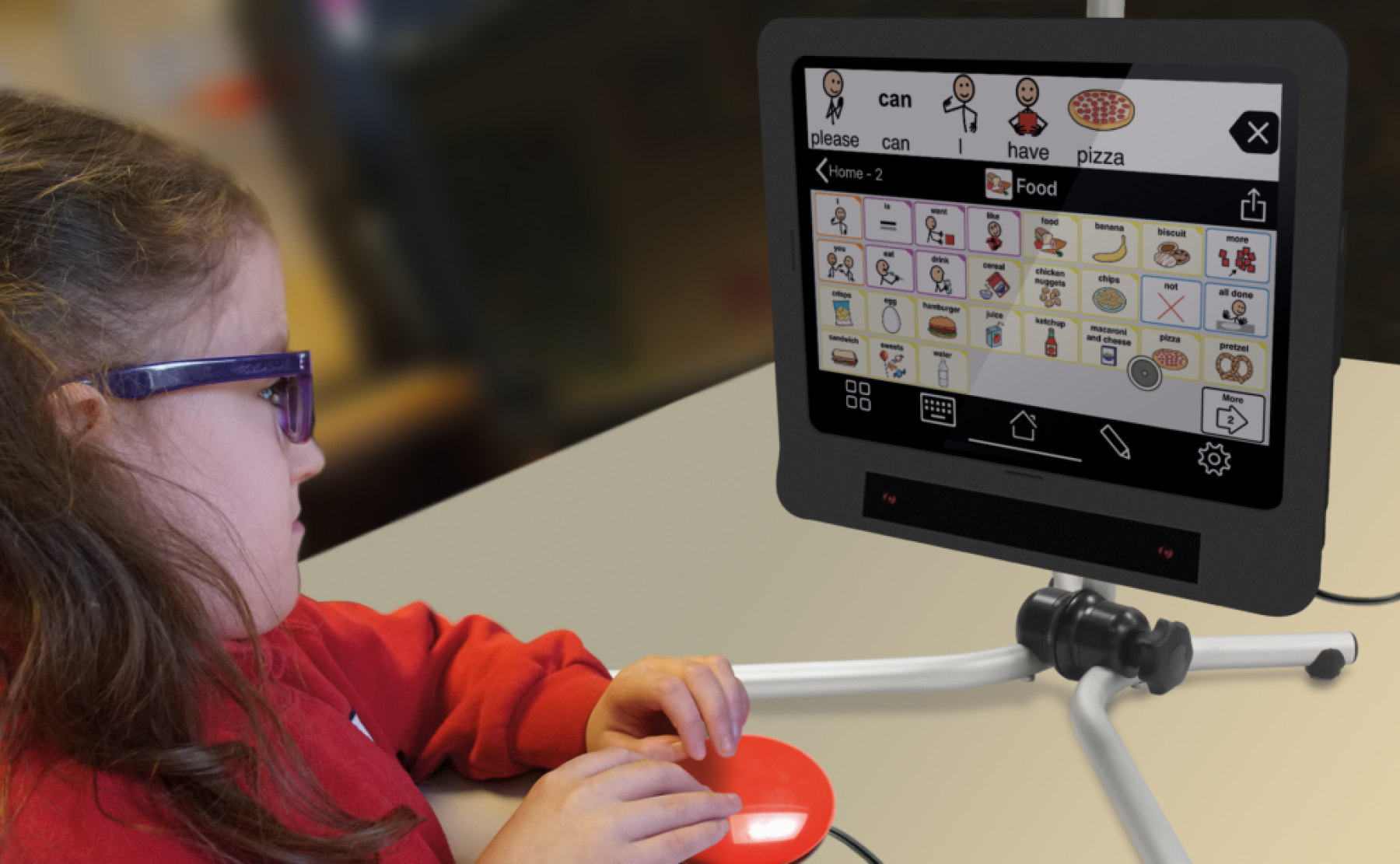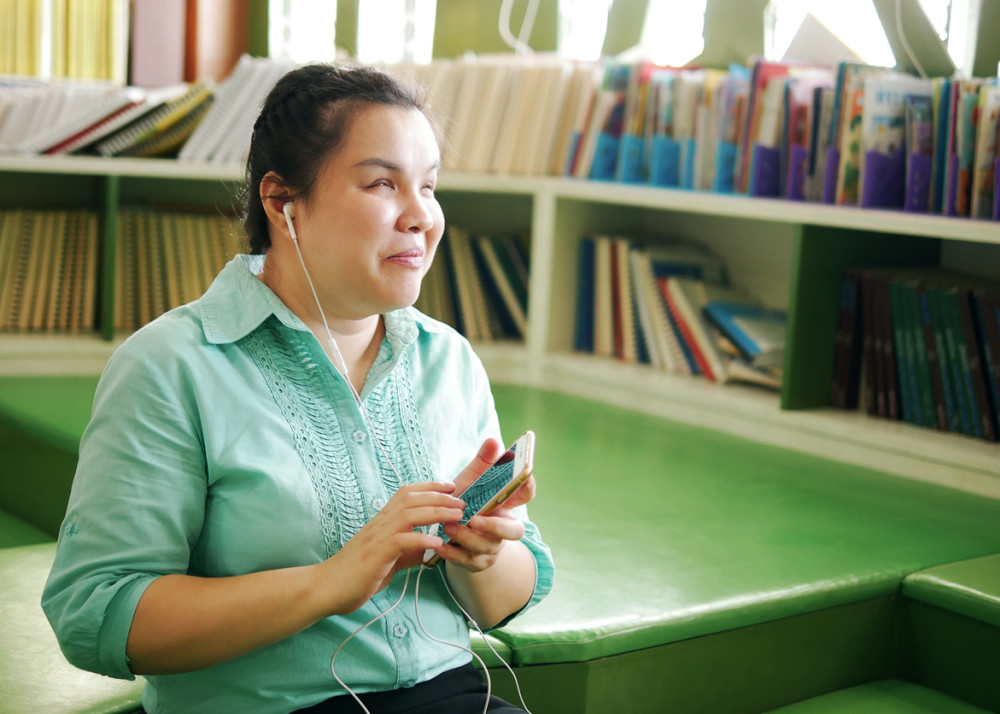5 New Assistive Technologies for 2024
30 August, 2023
Assistive technology can have a huge positive impact on daily life for those of us with a disability. We've searched for the best new assistive technologies that have been released so far in 2023 and that will make an impact in 2024..

If you are living with a disability, technology can aid in community inclusion, getting your medication or simply getting around.
This year, we've scoured the industry to bring you our list of the most exciting new assistive technology tools available today to help those with sensory, cognitive and physical disabilities.
Some of these technologies are so new that they're not available in Australia just yet, but if the overseas trials go well enough, we will hopefully be seeing them rolled out here too.
Top 5 New Assistive Technology Devices
1. Orbiter Smart Cushion
Credit: Kalogon
The Kalogon Orbiter Smart Cushion is a specialized seat cushion for wheelchairs. It is equipped with advanced sensors that identify and address the factors that can lead to pressure sores. By intelligently redistributing weight and providing relief from pressure, it effectively reduces the chances of developing pressure-related injuries.
Through its redistribution mechanism, the Kalogon Orbiter ensures that sensitive areas are not subjected to direct pressure. This not only aids in the healing of existing pressure ulcers but also acts as a preventive measure against new injuries. The technology is thoughtfully crafted to enhance the user's tolerance to prolonged sitting, enabling them to maintain an active and comfortable seated lifestyle, whatever their physical disabilities may be.
To personalize the experience, individuals can conveniently adjust the cushion's comfort and stability settings using a dedicated mobile application available for both iOS and Android mobile devices here.
2. GlassOuse hands-free mouse
Credit: GlassOuse Assistive Technologies
The GlassOuse is a hands-free mouse alternative tool created to assist individuals with mobility impairments, especially those who find traditional mice challenging due to physical disabilities. It allows users to navigate computers, tablets, or smartphones using head movements and facial gestures, eliminating the need for manual hand control. It can also be used to operate environmental control devices, speech generating devices and other communication aids.
Comprising a computer in a lightweight frame worn like glasses, the GlassOuse features strategically placed sensors that track the user's head movements. It establishes a connection to devices via Bluetooth or USB. The sensors interpret these movements into on-screen cursor actions. Users with physical disabilities, can perform tasks like clicking, scrolling, and dragging by executing specific head movements or using a bite-click button attached to the device.
This innovative assistive technology is particularly valuable for people with conditions such as spinal cord injuries, cerebral palsy, ALS (amyotrophic lateral sclerosis), and other neuromuscular disorders affecting hand and arm mobility. By providing an avenue to interact with digital communication devices, access the internet, communicate, and manage tasks independently, the GlassOuse contributes to enhancing accessibility and inclusivity for those with physical disability.
3. Ara Assistive Technology Device by Strap Technologies
Credit: Strap Technologies
You could think of Strap Technologies' Ara as a kind of wearable cane for the vision impaired. Equipped with advanced sensors and software, Ara interprets the user's surroundings and provides feedback to the wearer, enabling them to navigate their daily lives more efficiently and securely.
Using sensors strategically positioned on the wearer's head, chest, and lower body, Ara continuously collects real-time data from the environment. This information is then translated into haptic feedback, for example, alerting the user to potential dangers in their path. Specific vibration patterns are assigned to different situations, ensuring effective communication.
Ara's ingenuity lies in its ability to adapt seamlessly to the user's walking pace. When the wearer is moving briskly, the technology extends its reach to identify obstacles at a greater distance, enhancing proactive hazard avoidance.
Strap Technologies states that Ara contributes to an impressive 80% reduction in the likelihood of accidents caused by previously unnoticed objects. This wearable device exemplifies a significant step forward in enhancing the safety and mobility of individuals with visual impairments.
4. Xander Glasses by Xander
Credit: Xander
Xander Glasses by Xander are intelligent eyewear that use the latest ai driven speech recognition software to provide captions, much like the closed captions on your tv, for real-life conversations. They cater to individuals dealing with hearing impairment and can be used in addition to traditional hearing aids.
These smart spectacles transcribe and discreetly project speech onto its lenses, enabling wearers to seamlessly engage in discussions while maintaining direct eye contact with speakers.
Users have the flexibility to designate the preferred location for caption display on the glasses and no internet connection is required to operate the speech recognition software.
5. AngelSense Watch
Credit: AngelSense
Credit: AngelSense
The AngelSense Watch is a GPS tracking watch designed to assist those with independent living challenges. The AngelSense watch allows carers to talk to their loved ones and make sure they're doing well at any time. There's also an SOS call button on the device that the wearer can press just in case they need their carer.
The watch also allows carers to trace the paths and exact whereabouts of their loved ones and enables swift location identification during emergencies. This assistive technology device device also enables customizable safe zones, automatic geofencing and a daily timeline with detailed location history. It also learns the wearer's regular routes and alerts the caregiver when the wearer strays from those routes.
In addition, the watch features an audible device alarm and an assistive speakerphone button that allows communication by the caregiver even when their loved one is unable to operate the device.
There is a subscription fee to use an AngelSense watch but there's a free trial available so you can give it a go and send it back if you're not happy with it.
How can I access assistive technology?
Assistive tech can be very expensive. However, depending on the nature of your disability, it can be possible to use part of your NDIS funding to purchase these technologies. Eligibility for assistive tech is usually assessed by the NDIS, often with the assistance of an Occupational Therapist.
How Focus Care Can Help
There are so many fascinating kinds of assistive technology currently on the market, and we're always on the lookout for the latest. If you would like more information on how Focus Care can help you integrate assistive technology into your life, get in touch with us. In addition if you would like information on how we can assist those with a sensory, cognitive or physical disability more generally, please contact us.




